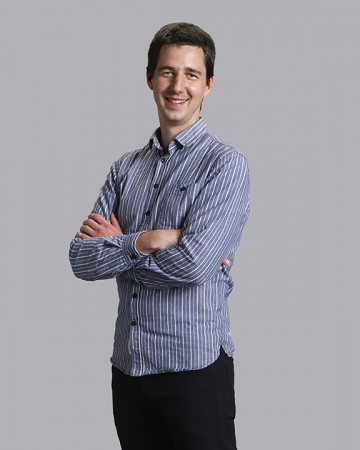Valerie Simmons and Jean-François Brière honoured as DALChampions
To celebrate its 10th anniversary, the Dawson Active Learning Community (DALC) has named 10 of its faculty members “DALChampions” in honour of their extraordinary contributions to innovating the classroom experience.
DALC is a group of teachers from a variety of disciplines that strives to improve teaching and learning through Active Learning (AL) pedagogical practices, and the development, design, and effective use of complementary educational technologies.
This week, we asked two of the DALChampions, Valerie Simmons (Professional Photography) and Jean-François Brière (Physics Department), about their experiences with the community of practice.

Tell us about your experience with DALC. What has been the best part?
V.S.: The best part of DALC is the people. Everyone is so generous, open-minded, kind and supportive.
J-F. B.: I still remember vividly the years following the creation of the first high-tech classroom. How clueless we all were about the best way to use the room to its full potential. The community of teachers that was developed was crucial in helping me polish new teaching strategies. The diverse background of the teachers involved promoted a creative environment that transformed failing learning activities into successes. It was one of the professional development highlights of my career.
How do you think active learning pedagogy enriches the learning experience?
V.S: Active learning pedagogy makes course content more meaningful to students as they actively engage in the material. They become participants in their learning, and there is a sense of accomplishment for students when they are left to grapple with the material and solve problems through their own experiments and discoveries. They evolve from receptacles to creators.
J-F. B.: We often say that the most important piece of technology in our active learning classrooms is the big tables — And I still stand by this. Giving students the space to collaborate with each other offers amazing benefits. It enables students to communicate using the vocabulary of the discipline, forces them to explain their ideas, convince others, and basically to become actively involved in the learning process. For most students, it also makes it fun to be in class by adding a social component that is not easy to reproduce in regular classrooms.

How has adopting an active learning approach informed your practice?
V.S.: I believe I have moved from pushing my students to memorize a pile of procedures to a more experimental approach. At times, the immediate results don’t seem all that satisfactory, but the gains are evident in the long term. At first, I felt like I had to slow down so much with this approach that I would never get through all of the course material. But once I became more accustomed, I realized that getting through a lot of material doesn’t mean anything if the students are not actually learning. I try to do less talking and more facilitating. Nobody wants to listen to Charlie Brown’s teacher.
J-F. B.: The most important impact of transitioning to active learning in my teaching was my change of perspective on how I want to use class time. Teaching in a discipline that is content-heavy (physics), a large portion of my teaching was going over definitions and derivation of equations. I do very little of this during class nowadays. Students have prep work assignments that introduce them to the vocabulary and equations and encourage them to initiate a reflection on the material covered. Then, in class, we can pass more time on tricky concepts, typical misconceptions, and the application of the theory. It gives me more time to let them try and fail under my watch so that I can intervene just when they need it.


